- Andy Isaacs
- Director
- Learning Trajectories for Everyday Computing (LTEC)
- http://everydaycomputing.org
- University of Chicago
- Maya Israel
- http://education.illinois.edu/faculty/misrael
- Assistant professor
- Learning Trajectories for Everyday Computing (LTEC)
- http://everydaycomputing.org
- University of Illinois at Urbana-Champaign
- George Reese
- http://education.illinois.edu/faculty/reese
- Director
- Learning Trajectories for Everyday Computing (LTEC)
- http://everydaycomputing.org
- University of Illinois at Urbana-Champaign
Facilitators’
Choice Public
Choice
Choice Public
Choice
Public Discussion
Continue the discussion of this presentation on the Multiplex. Go to Multiplex



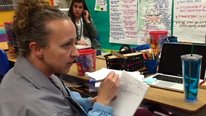
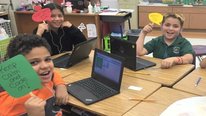

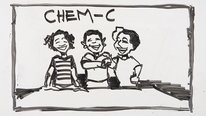
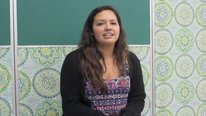
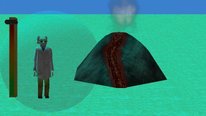
Maya Israel
Assistant professor
Hi. This is Maya Israel. I’m one of the co-PIs on our STEM+C project: Learning Trajectories for Everyday Computing (LTEC). This is a project that just started in January, but is building on three years of work with the Champaign Unit 4 school district on integrating computing into instruction. This project focuses specifically on creating learning trajectories for integrating computing within elementary math. We are using the Everyday Math 4 curriculum. We welcome comments and questions and are thrilled to share our work with you.
Brian Drayton
Very interesting and ambitious. I am always intrigued by the potential pitfalls of progressions-development. In the video, I am hearing the intersection of a couple of different kinds of trajectories, though. One is the conceptual/procedural set of ideas
- iteration, flow-of-control, variables, debugging- the other is the trio of kinds of problem-solving which (I think it was ) Cinda listed. “Creative” and “persistent” etc. — how do such dispositional factors relate to the more evidently conceptual trajectories?Maya Israel
Assistant professor
Thank you so much for your comment about issues that we will undoubtedly face when creating these progressions. As this is an exploratory project, we are taking a 3-pronged approach. First, we are building a database of research articles, current CS/CT curricula, and implementation materials to understand the implicit progressions within these. Second, we are looking at Scratch blocks and the types of math content required to use those particular blocks or series of blocks. Lastly, we are looking at integrated math/CS integration model lessons to try to see whether we can learn how math and CS can be integrated at the elementary level and the intersection between CCSS-math and the conceptual and procedural math required to actually meaningfully participate in these integrated activities. Within these activities, we are studying things such as persistence and collaboration. We assume that there will be overlap between these three exploratory progressions, but at this point, we have NO IDEA if that will actually be the case.
Paige Prescott
You mention that you are using Scratch to develop the math lessons and I’m wondering why you chose Scratch and also whether you looked into other tools that could combine computing and math.
George Reese
Director
Hi Paige,
In working with our partner school, we were originally using Etoys. But as the school began using chromebooks, Scratch just made more sense. The fact that Scratch was so well known was another reason for the switch. Students did do some wonderful things with Etoys. One drawback with Scratch, is that students spend more time on the aesthetics (e.g., finding sprites and making backgrounds) than on the programming itself.
Thanks for your comment. -George
Elc Estrera
Senior Research Analyst
This is very interesting work, Maya and team. I am curious about some of the central challenges you encountered in developing the program. Can you describe one or two of these?
Maya Israel
Assistant professor
Thanks! As you would expect, there are several challenges associated with this project. The biggest challenge is currently is coordinating the needs of the research the time schedule of the schools. Because we are studying computing in the context of math instruction, we need to coordinate when our pilot studies will take place with the timing of math instruction. This requires knowing the pacing guides of the classrooms and associated the math content. Another challenge (which is definitely lessening) is coordinating efforts between two research groups. Since this is a coordinated effort between my institution (UIUC) and my colleagues at CEMSE at the U of Chicago, it has taken effort to communicate the grant responsibilities, time lines, etc. I would love to hear how others address similar challenges!
Marty Gartzman
With the huge push to integrate CS into the curriculum, and its inherent assumption that computational thinking and mathematical thinking have much overlap, this project can help begin the necessary step of looking empirically at this issue.
Maya Israel
Assistant professor
That’s the hope Marty! I think that one of the intellectual contributions of this project will also be to identify the gaps and places where CS and computational thinking do not fit well within mathematics instruction.
Nicole Reitz-Larsen
Educator
I think it is a great idea to start exposing students to computational thinking in elementary school. I really like the variety of activities that were suggested and the unplugged activities that were demonstrated in the video. I agree that giving students a chance to have a tangible experience with cs concepts will better prepare them for their thought process when on the computer.
I’m curious to find out how your professional development works. What is the length of the pd, during which grades are you implementing the curriculum and what does your scalability look like? In addition, what kind of follow up curriculum or activities do the students have after their exposure? (every other grade, 10 hours each year, etc)
George Reese
Director
Thanks for this comment and question, Nicole. We work closely with the district and the school on the professional development. As with the project overall, we are looking for ways to integrate. So, for example, the district found some dollars for stipends for teachers for a one-week summer experience, and the University team brings together the faculty and staff to work with the experienced teachers to put together the agenda. Teachers work with us to write modules and bring resources together for the classroom.
The teachers also have this question about scale. We are finding that a good approach is to promise only that we’ll continue to work with them beyond any particular grant period or project PD. We all know this is new territory, so our promise is to stay together and develop together.
This summer we’re doing a workshop that will train the middle school teachers at the school that takes students from our partner elementary school. That’s one way we’re scaling up. Another is to develop, publish, and promote curricular modules as widely as we can like the “Discovering Computer Science & Programming with Scratch” book that we published with National 4-H.
Barbara Ericson
Can you tell us where to find this book?
Jelena Pokimica
This is a fascinating project through joint U of I and CEMSE efforts with our local elementary schools in the Champaign community. It is inspiring working on it as a Research Assistant at U of I and being able to participate in multiple phases of the project. For example, the data collection phase is much more than its name says; it opens doors to truly experience first-hand what goes on in the classroom, with valuable exchanges with and observations of teachers, coaches, and students. It is equally noteworthy to see how schools have taken up on this integrative computing-math initiative.
Maya Israel
Assistant professor
Thanks Jelena. One of the most exciting aspects of this project is working with smart graduate assistants (such as yourself) and brining in your expertise, unique perspectives, and drive to improve the project!
Nicole Reitz-Larsen
Educator
Thank you for responding. It is nice to hear more about the project. You all are doing some exciting work.
Michael Davis
Keep up the good work! I remember taking Basic in elementary school back when no one was teaching coding to kids and it completely changed the course of my life. I’m proud of you Maya!
Maya Israel
Assistant professor
Thanks Mike (sibling encouragement is always appreciated). We have an amazing team of researchers and practitioners working together on this project. It is truly privileged work.
Veronica Cassone McGowan
I found this to be a valuable piece on the need to support computer science and computational inquiries in the classroom, and ways that computing can be integrated into other disciplinary structures, such as math. This really moves computing beyond just coding or gaming, and positions it as a tool for related inquiry processes.
Maya Israel
Assistant professor
Hi Veronica. We appreciate your comment. I agree with you that if we can think of computing as a way to teach applied mathematics and then use mathematics to help kids design computational artifacts, we start moving towards a much more authentic integration of computing into the content areas.
George Reese
Director
Yes, indeed. “Math for All” has learned many lessons that should inform this effort.
Jeff Forbes
Associate Professor of the Practice
This project has a number of really interesting components: food justice, building mechanical and electronic components that can me controlled via a computer program, mentoring and leadership development, etc. A student mentioned developing a mobile app. How would this mobile app fit into the project? What would it do? How would students develop it?
Barbara Ericson
Several countries are interested in figuring out what we should teach young children about computing. What are the big ideas that they can understand and build on? It sounds like sequencing is one that you are looking at and conditionals. Do you think they can understand abstraction and if so at what age?
Maya Israel
Assistant professor
Hi Barbara. We are at the very beginning stages of trying to figure out a learning progression for young learners. We are hoping that in about 5-6 months, we will publish some of these findings on our website: http://everydaycomputing.org.
Further posting is closed as the showcase has ended.